430. The order in the right side tresses of
the stone statue of Pachamama has a progression after the first 78 days,
perhaps to
illustrate growth:
|
Counting the tresses from right to left: |
|
1 |
26 |
78 |
1 |
29 |
90 |
|
2 |
26 |
2 |
30 |
|
3 |
26 |
3 |
31 |
|
4 |
25 |
78 |
4 |
34 |
124 |
|
5 |
26 |
5 |
31 |
|
6 |
27 |
6 |
30 |
|
7 |
26 |
104 - 78 |
7 |
29 |
|
Total = 396 = 182 + 214 |
|
 |
Counting 25 glyphs ahead from Cb3-21
(→ 3, 2, 1, 0 →
'counting down') will bring us to the beginning of
glyph line Cb5, from day 500 at the time of Bharani
to day 525 (= 15 * 35), from "May 15 (135 + 365) to
day 135 + 25 = 160 ("June 9), i.e. to Naos.
Given that we are referring to the stars and dates
observed at the Full Moon in the southern spring.
... The practice of turning down the
fingers, contrary to our practice, deserves notice,
as perhaps explaining why sometimes savages are
reported to be unable to count above four. The
European holds up one finger, which he counts, the
native counts those that are down and says 'four'.
Two fingers held up, the native counting those that
are down, calls 'three'; and so on until the white
man, holding up five fingers, gives the native none
turned down to count. The native is nunplussed, and
the enquirer reports that savages can not count
above four ...
|
25
(163 +
75 = 238) |
AUG 26 |
27 (240 = 281 - 41) |
28 (*161) |
29 (242 = 2 * 121) |
|
22 (220 + 75 = 10 * 29½) |
OCT 23 |
24 |
25 (*218
= *161 + *57) |
26 (299) |
 |
 |
 |
 |
 |
|
Cb3-20 (461) |
Cb3-21 (384 + 78) |
Cb3-22 |
Cb4-1 (392 + 72) |
Cb4-2 |
|
kiore - henua |
manu rere i te
taketake |
te henua - mau i
te taketake |
manu rere |
kiore - henua |
|
... The specific epithet taketake
is Māori for long established,
ancient, or original ... |
|
CLOSE TO THE SUN: |
|
KAUS BOREALIS = λ Sagittarii
(279.3) |
ν Pavonis (280.4), κ Cor. Austr.
(280.9)
*239.0 = *280.4 - *41.4 |
Abhijit-22 (Victorious)
θ
Cor. Austr.
(281.0),
VEGA = α Lyrae
(281.8) |
no star listed (282) |
ζ
Pavonis (283.4),
λ
Cor. Austr. (283.6),
DOUBLE DOUBLE =
ε
Lyrae
(283.7),
ζ
Lyrae (283.8)
*242.0 = *283.4 - *41.4 |
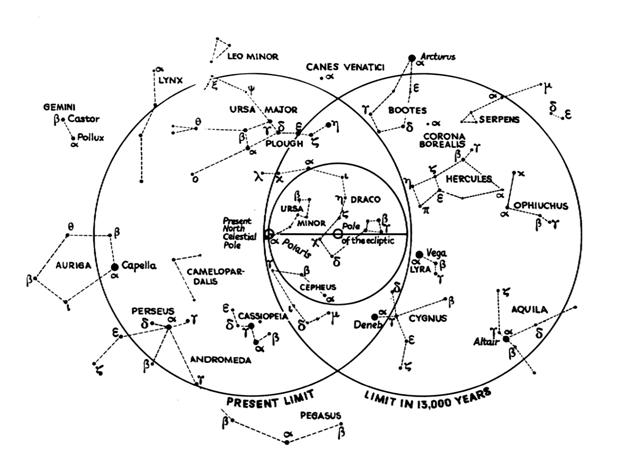
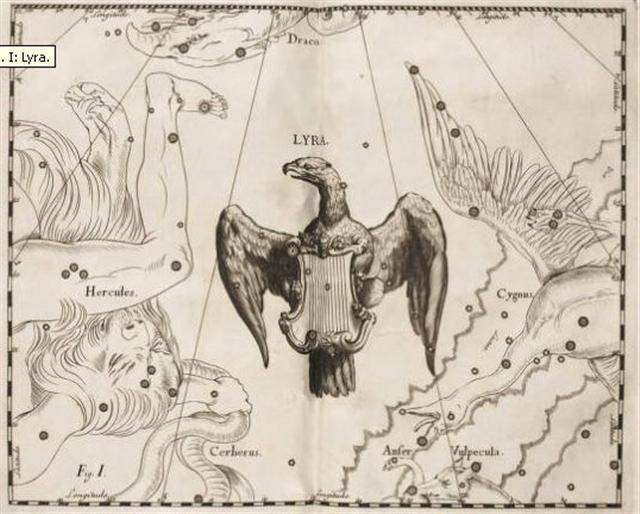 |
|
Dec 25 |
26 (360) |
27 |
28 |
29 |
|
SOLSTICE |
°Dec 22 (356) |
23 (*277) |
CHRISTMAS EVE |
25 |
|
'Nov 28 |
29 (360 - 27 = 333) |
30 (320 + 14) |
'Dec 1 |
2 (*256 = 16 * 16) |
|
"Oct 14 |
15 |
16 (320 = 357 - 27) |
17 |
18 (*242
= 2 * 121) |
|
CLOSE TO THE
FULL MOON: |
|
ST JOHN'S DAY |
June 25 |
26 (177 = 6 * 29½) |
27 |
28 (*99) |
|
"May 14 (59 + 75) |
15 (365 + 135 = 500) |
16 (136 = 272 / 2) |
17 |
18 (*58) |
|
Well-22 (Tapir) /
Arkū-sha-pu-u-mash-mashu-8
(Back of the Mouth of the Twins)
δ
Columbae (95.2),
TEJAT POSTERIOR =
μ
Gemini,
MIRZAM (The Roarer) =
β
Canis Majoris
(95.4),
CANOPUS (Canopy) = α Carinae
(95.6),
ε
Monocerotis (95.7),
ψ1
Aurigae (95.9)
*54 = *95.4 - *41.4 |
no star listed (96) |
β Monocerotis, ν Gemini (97.0) |
no star listed (98) |
ν Puppis (99.2), ψ3 Aurigae (99.4),
ψ2 Aurigae (99.5)
*58 = *99.4 - *41.4
GEMMA (α
Cor. Bor.)
|

... The Pythagoreans make Phaeton
fall into Eridanus, burning part of
its water, and glowing still at the
time when the Argonauts passed by.
Ovid stated that since the fall the
Nile hides its sources. Rigveda
9.73.3 says that the Great Varuna
has hidden the ocean. The
Mahabharata tells in its own style
why the 'heavenly Ganga' had to be
brought down. At the end of the
Golden Age (Krita Yuga) a
class of Asura who had fought
against the 'gods' hid themselves in
the ocean where the gods could not
reach them, and planned to overthrow
the government. So the gods implored
Agastya (Canopus, alpha
Carinae = Eridu) for help. The great
Rishi did as he was bidden, drank up
the water of the ocean, and thus
laid bare the enemies, who were then
slain by the gods. But now, there
was no ocean anymore! Implored by
the gods to fill the sea again, the
Holy One replied: 'That water in
sooth hath been digested by me. Some
other expedient, therefore, must be
thought of by you, if ye desire to
make endeavour to fill the ocean
...
... Canopy ... covering over
a throne, etc. XIV (Wycl.). Late ME.
canope, canape - medL.
canopeum baldacchino, for L.
cōnōpēum, -eum, -ium
net over a bed, pavilion - Gr.
kōnōpeîon Egyptian bed with
mosquito curtains, f. kōnōps
gnat, mosquito
... |
|
... In other words, the ancient
Druidic religion based on the
oak-cult will be swept away by
Christianity and the door - the god
Llyr - will languish forgotten in
the Castle of Arianrhod, the
Corona Borealis. This helps us
to understand the relationship at
Rome of Janus and the White Goddess
Cardea who is ... the Goddess of
Hinges who came to Rome from Alba
Longa. She was the hinge on which
the year swung - the ancient Latin,
not the Etruscan year - and her
importance as such is recorded in
the Latin adjective cardinalis
- as we say in English 'of cardinal
importance - which was also applied
to the four main winds; for winds
were considered as under the sole
direction of the Great Goddess until
Classical times
... |
|
21 (36 + 75 = 111) |
APRIL 22 |
23 (177 - 64 = 113) |
24 |
25 (*35) |
|
25
(*341 = *266 + *75) |
26 (*96 + *246 = *342) |
FEBR 27 (464 / 8) → π |
28 (59 = 80 - 21) |
MARCH 1 (242 - 182) |
|
21 |
|
NOV 17 (321
= 385 - 64) |
18 |
19 |
 |
 |
 |
|
Cb5-1 (392 +
95) |
Cb5-2 (488) |
Cb5-3 |
|
Te ragi |
tagata -
ragi |
kua
hakagana -
ki te maro |
|
CLOSE TO THE SUN: |
|
SHANG WEI
(Higher
Guard) = κ
Cephei
(305.2), θ
Sagittae
(305.4),
TSEEN FOO
(Heavenly
Raft) = θ
Aquilae
(Ant.)
(305.6), ξ
Capricorni
(305.8)
*264.0 =
*305.4 -
*41.4 |
TSO KE (Left
Flag) = ρ
Aquilae
(306.3) |
GREDI (Goat)
= α
Capricorni
(307.2), σ
Capricorni
(307.5),
ALSHAT (The
Sheep) = ν
Capricorni
(307.9) |
|
Jan 20 (385) |
21 |
22 |
|
CHRISTMAS
EVE |
'Dec 25 |
26 (360) |
|
"Dec 10
(*264.0 =
*305.4 -
*41.4) |
11 (345) |
12 |
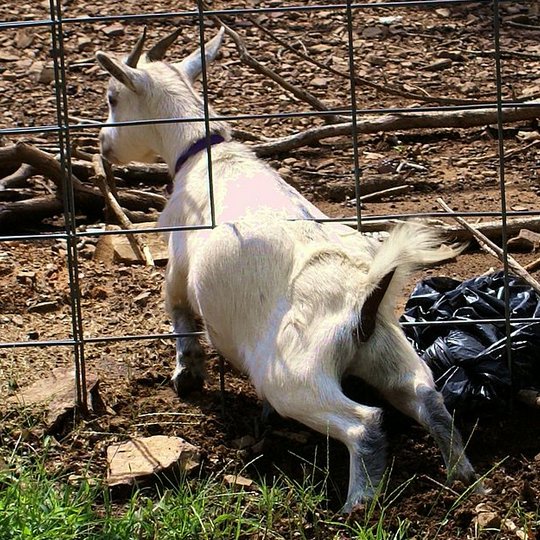 |
|
CLOSE TO THE
FULL MOON: |
|
MAY 17 (*121
- *64 = *57) |
18 |
19 |
|
8h (121.7)
χ Gemini
(121.0),
NAOS = ζ
Puppis
(121.3) |
ρ
Puppis
(122.0),
HEAP OF FUEL
=
μ
Cancri
(122.1),
ζ
Monocerotis
(122.3), ψ
Cancri
(122.6),
REGOR (Roger
backwards) =
γ
Velorum
(122.7) |
TEGMINE =
ζ Cancri
(123.3) |
|
July 20
(*121) |
21 |
22 (22 / 7 →
π) |
|
"June 9
(*121 - *41
= *80) |
He Maro 10
(161) |
11 |
|
... The
month, which
takes its
name from
Juppiter the
oak-god,
begins on
June 10th
and ends of
July 7th.
Midway comes
St. John's
Day, June
24th, the
day on which
the oak-king
was
sacrificially
burned
alive. The
Celtic year
was divided
into two
halves with
the second
half
beginning in
July,
apparently
after a
seven-day
wake, or
funeral
feast, in
the
oak-king's
honour
...
|
he nape mai a Makoi.i te ingoa. ko hanga te pau ko te tomonga o Ira. |
Makoi named the place Hanga Te Pau, 'the landing site of Ira'. |
|
he aringa.ko mua a hanga te pau. |
So that they would remember (? he aringa, literally, 'as face'), the open side of Hanga Te Pau |
|
i nape ai te ingoa. |
was given this name. |
|
he ea.a Ira.he iri he oho ki runga anake. |
Ira got up. They all climbed to the top of the hill. |
|
i te angahuru o te ra o te maro i iri ai. |
They climbed up on the tenth day of the month of June 'Maro'. |
|
 |
 |
 |
 |
|
Cb5-4 |
Cb5-5 |
Cb5-6 (100) |
Cb5-7 (493) |
|
tagata
mau matagi |
ihe toga
maa |
ura hia |
tagata
maú kihikihi
erua |
|
Matagi.
Wind, air,
breeze,
squall,
tempest,
rhumb. P
Pau.:
matagi,
the air,
wind. Mgv.:
matagi,
wind. Mq.:
metani,
metaki,
wind, air.
Ta.:
matai,
wind.
Churchill.
Tagi.
To cry, to
weep, to
moan;
tatagi,
to cry much;
to cry
loudly:
he-tagi te
karaga;
tagata rava,
tagi karaga,
bawling,
vociferous
person.
Vanaga. To
cry, to
bark, to
mew, to
bawl, to
whine, to
ring, to
wail, to
prattle, to
weep,
lamentation,
condolence,
to regret,
to affect,
to wish, to
will, to
choose,
earnestness;
tae tagi,
inhuman,
insensible,
to refuse,
to renounce;
tagi
kiukiu,
ring of a
bell;
tagi
rakerake,
to wish one
ill; tagi
kore,
indifferent;
manava
tagi, to
affect;
hakatagi,
to cause to
weep, to
make
resound, to
ring;
tagitagi,
to covet;
tatagi,
cry
mourning,
grief,
lamentation,
to groan, to
weep, to be
affected, to
grow tender;
tatagi
tahaga,
inconsolable;
tatagihaga,
friendship.
Churchill. |
|
CLOSE TO THE SUN: |
|
Jan 23 |
24 |
25 (390) |
26 |
|
'Dec 27 |
28 |
29 |
30 (364) |
|
"Dec 13 |
14 |
15 |
16 (350) |
|
Al Sa’d al
Dhabih-20
(Lucky One
of the
Slaughterers)
/
Ox / Herd
Boy-9
(Buffalo)
DABIH = β
Capricorni
(308.0), κ
Sagittarii
(308.1),
SADIR (Hen's
Breast) =
γ
Cygni
(308.4),
PEACOCK =
α Pavonis
(308.7) |
MINTAKA (δ
Orionis)
OKUL = π
Capricorni
(309.6),
BOS = ρ
Capricorni
(309.9)
ARNEB (α
Leporis)
|
ALNILAM (ε
Orionis)
ο Capricorni
(310.2), θ
Cephei
(310.5)
HEKA (λ
Orionis) |
ALNILAK (ζ Orionis)
ROTTEN MELON
= ε Delphini,
φ Pavonis
(311.2), η
Delphini
(311.4), ζ
Delphini, ρ
Pavonis
(311.7)
PHAKT (α
Columbae) |
|
CLOSE TO THE
FULL MOON: |
|
MAY
20 (*124 -
*64 = *60) |
21 (141 =
164 - 23) |
22 |
23 |
|
AL TARF (The
End) = β
Cancri
(124.3)
RAS ALGETHI
(α Herculis)
|
χ Cancri
(125.2),
BRIGHT FIRE
= λ Cancri
(125.4) |
AVIOR = ε
Carinae
(126.4), φ
Cancri
(126.8) |
ο Ursa
Majoris
(127.4) |
|
"June
12 (163 =
204 - 41) |
13 (*84 =
*125 - *41) |
14 (530 =
365 + 165) |
He Maro 15
(18 * 29½) |
|
Makoi
got up and
began to
familiarize
himself with
the (new)
land. (This
took place)
on the
fifteenth
day of the
month of
June ('Maro').
He went
toward the
sheer face
of the rocks
(titi o
te opata),
was
astonished (aaa),
came up to
the middle
(of the
outer rim of
the crater),
and stood at
the very
edge.
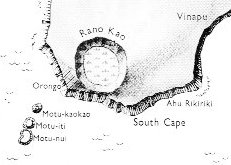
He looked
down and saw
the Pu
Mahore
of Hau
Maka
(on the
coast) and
said, 'There
it is, the
hole of the
mahore
fish of
Hau Maka!'
He turned
his face and
looked
toward the
back (i.e.,
in the
direction of
the crater).
No sooner
had he seen
how the dark
abyss opened
up (below
him), when a
fragrant
breeze came
drifting by.
Again
Makoi
said, 'This
is the dark
abyss of
Hau
Maka'.
He turned
around,
walked on in
utter
amazement,
and arrived
at the
house. He
spoke to
Ira,
'Hey you, my
friends! How
forgetful we
(truly) are.
This place
is adequate
(? tau
or
'beautiful'),
the dark
abyss lies
there
peacefully!'
Ira
replied,
'And what
should that
remind us of
up here?'
All arose
and climbed
up. They
went on and
arrived;
they all had
a good look
(at the
inside of
the crater).
They
returned
home and sat
down. Night
fell, and
they went to
sleep.
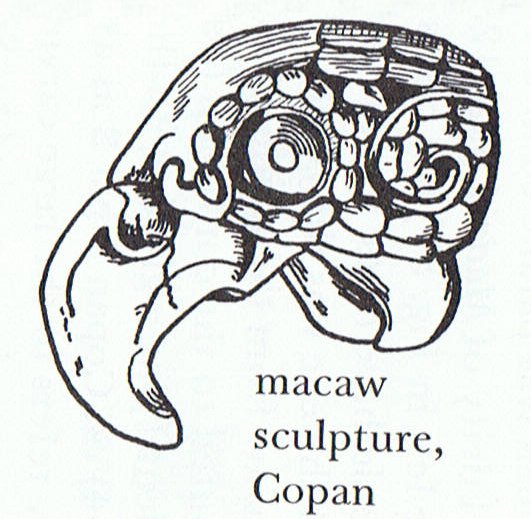
|
 |
 |
 |
 |
 |
|
Cb5-8 |
Cb5-9 (495) |
Cb5-10 |
Cb5-11 |
Cb5-12 |
|
te hoko
huki |
kua kake
te manu
puoko erua |
E nuku
mata |
te
kihikihi o
te ariki -
te hokohuki |
te hau
tea |
|
Kihi.Kihikihi,
lichen;
also: grey,
greenish
grey, ashen.
Vanaga.
Kihikihi,
lichen T,
stone T.
Churchill.
The Hawaiian
day was
divided in
three
general
parts, like
that of the
early Greeks
and Latins,
- morning,
noon, and
afternoon -
Kakahi-aka,
breaking the
shadows,
scil. of
night;
Awakea,
for
Ao-akea,
the plain
full day;
and
Auina-la,
the decline
of the day.
The lapse of
the night,
however, was
noted by
five
stations, if
I may say
so, and four
intervals of
time, viz.:
(1.) Kihi,
at 6 PM, or
about
sunset; (2.)
Pili,
between
sunset and
midnight;
(3) Kau,
indicating
midnight;
(4.)
Pilipuka,
between
midnight and
surise, or
about 3 AM;
(5.)
Kihipuka,
corresponding
to sunrise,
or about 6
AM ...
|
|
Jan 27 |
28 |
*314
(Albali, ε
Aquarii)
|
30 |
31 (396) |
|
'Dec 31 |
'Jan 1 (366) |
2 |
3 |
4 |
|
"Dec 17 |
18 |
19 |
20 (12 *
29½) |
SOLSTICE |
|
CLOSE TO THE
FULL MOON: |
|
"June
16 |
17 (168) |
18 |
19 |
20 (*91) |
 |
 |
 |
 |
 |
 |
|
Cb5-13 (107) |
Cb5-14 (392
+ 108) |
Cb5-15 (501) |
Cb5-16 |
Cb5-17 |
Cb5-18 |
|
te moa |
te
maitaki |
te henua |
e gagata
tu - ki te
huaga |
koia ra
kua mau ki
toona mea |
|
Febr 1 |
2 |
3 |
*320 (Dramasa) |
5 |
6 |
|
'Jan 5 |
6 |
7 |
8 |
9 |
10 (375) |
|
"Dec 22 |
23 |
CHRISTMAS
EVE |
25 |
26 (360) |
27 (355 + 6) |
|
CLOSE TO THE
FULL MOON: |
|
SOLSTICE |
22 |
23 |
ST JOHN'S
DAY |
25 (*96) |
26 (354 / 2) |
 |
 |
 |
|
Cb5-19 |
Cb5-20
(506) |
Cb5-21
(115 →
Mercury) |
|
erua
rima
noho i
te
harepure |
rima
ma te
hua - e
ariki
erua |
|
Hare.
House,
family,
home.
Vanaga.
House,
cabin,
habitation,
building,
hut,
structure;
hare iti,
hut; hare
itiiti
no,
cabin;
hare kahu,
tent;
hare neinei,
latrine;
hare no iti,
cell;
hare nunui,
palace;
hare
pohurihuri,
prison;
hare pure,
chapel,
church;
ki te hare,
at home.
Harepepe,
kelp.
Harepiko,
a. asylum,
place of
refuge; b.
ambush,
snare.
Harepopo,
shed.
Harepopokai,
storehouse.
Churchill. |
|
Febr 7 (403) |
8 |
*325
(Sadalsud,
β
Aquarii) |
|
'Jan 11 |
12 |
13 (378
→
Saturn) |
|
"Dec 28 |
29 |
30 (364) |
|
CLOSE TO THE
FULL MOON: |
|
"June
27 |
28 |
29
(*100) |
Here we should
remember that
fire and water
were perceived
as complementary
aspects of the
same basic
phenomenon:
... He was
moreover
confronted with
identifications
which no
European, that
is, no average
rational
European, could
admit. He felt
himself
humiliated,
though not
disagreeably so,
at finding that
his informant
regarded fire
and water as
complementary,
and not as
opposites. The
rays of light
and heat draw
the water up,
and also cause
it to descend
again in the
form of rain.
That is all to
the good. The
movement created
by this coming
and going is a
good thing. By
means of the
rays the Nummo
draws out, and
gives back the
life-force. This
movement indeed
makes life. The
old man realized
that he was now
at a critical
point. If the
Nazarene did not
understand this
business of
coming and
going, he would
not understand
anything else.
He wanted to say
that what made
life was not so
much force as
the movement of
forces. He
reverted to the
idea of a
universal
shuttle service.
'The rays drink
up the little
waters of the
earth, the
shallow pools,
making them
rise, and then
descend again in
rain.' Then,
leaving aside
the question of
water, he summed
up his argument:
'To draw up and
then return what
one had drawn -
that is the life
of the world'
...
|
↑ |
 |
283 |
 |
↑ |
|
Cb1-10
(402 =
392 +
10) |
Gb2-1
(256 =
229 +
27) |
|
April 26
(116) |
Febr 4
(400 =
116 +
284) |
|
σ Ceti
(36.9) |
σ
Octantis,
Dramasa
(320.0) |
|
↓ |
σ Lupi
(219.1) |
σ¹ Ursae
Majoris
(137.0) |
↓ |
|
Oct 26
(299 =
116 +
183) |
Aug 5
(217 =
400 +
183 -
366) |
|
Gb4-17
(337 =
229 +
108) =
256 +
101) |
Cb5-17
(503 =
392 +
111) =
402 +
101) |
 |
 |
|
285 (=
365 -
80) |

|





























